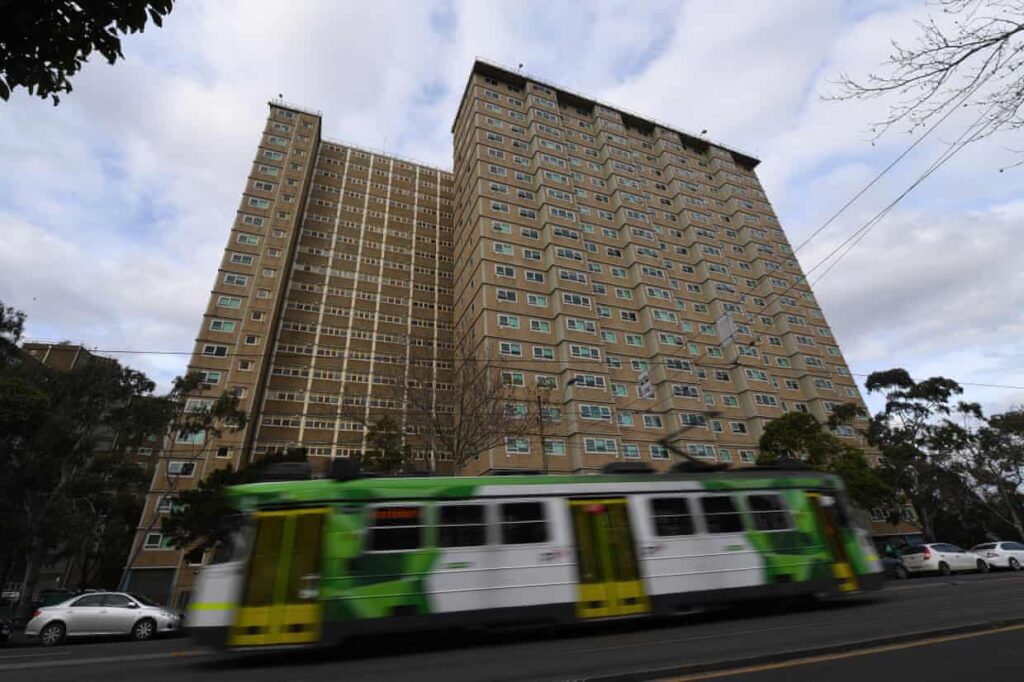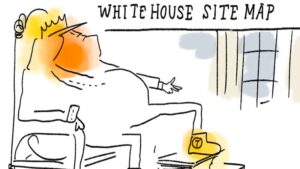
UPDATE: An urgent pushback against the Victorian government’s controversial plan to demolish Melbourne’s iconic public housing towers has emerged. Engineer Gerry Noonan, who played a pivotal role in constructing these structures in the 1960s, condemned the proposal during a parliamentary inquiry, labeling it as “expensive, unnecessary, and environmentally irresponsible.”
Noonan’s remarks come just days after the government, led by former premier Daniel Andrews, announced sweeping plans to demolish all 44 towers by 2051. The demolition will begin with three occupied towers in Flemington and North Melbourne and two unoccupied towers in Carlton. Advocates fear that the shift to community housing could lead to higher rents and reduced tenant protections.
“It’s sinful to knock those buildings down. They’re icons,” Noonan passionately stated at the inquiry held on Wednesday. He urged that instead of demolition, these structures should be refurbished and upgraded, emphasizing the financial and carbon costs of tearing them down.
According to government sources, the towers have become outdated and are deemed unsafe. Peta McCammon, secretary of the Department of Families, Fairness and Housing, argued that many towers failed key safety standards and would be at risk during fires or seismic events. The department reported alarming conditions, with some pipe walls eroded to just 0.2mm thick, leading to potential risks for around 3,000 homes due to failing sewer systems.
However, Noonan countered this narrative, suggesting that the issues are manageable and fixable. “I live in a house that was built 155 years ago. You get the odd problem, but it’s not a big deal certainly not to knock the whole building down over it,” he asserted, highlighting the longevity of older structures.
The inquiry has also seen input from other professionals. Architect Richard Cameron argued that retrofitting the existing towers could extend their life by another 50 years at a fraction of the government’s proposed costs, potentially saving taxpayers $364 million.
Housing worker Jackson Payne, part of the Stop the Demo coalition, challenged the rationale behind the redevelopment. “Where is the evidence? I fail to understand that the solution to the housing crisis of today is to demolish the safety net of tomorrow – public housing,” he said.
In an effort to clarify the benefits of community housing, Sarah Toohey from the Community Housing Industry Association Victoria assured the inquiry that renters in both public and community housing have the same rights under the law. Yet, concern remains high among tenants and advocates regarding the potential loss of public housing close to the city.
The Victorian Public Tenants Association, represented by chief executive Katelyn Butterss, voiced conditional support for redevelopment, warning that if buildings fall out of public ownership, the future of accessible housing in urban areas is at risk.
As the inquiry continues, the debate intensifies around the future of Melbourne’s public housing. With the government pushing forward with its demolition plan, the community remains divided, advocating for urgent action to preserve these vital structures.
What happens next? The inquiry will gather further testimonies, and the government is expected to respond to the mounting concerns from engineers, architects, and housing advocates alike. Stay tuned for updates on this developing story.







